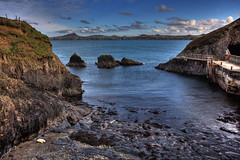
- Find Out More About:
- On Property Cattle Yard
Namibia is the 2nd lowest populated country with a population of only 1.8 million. Despite this it has many various peoples, with their own cultures, languages and traditions. This makes Namibia a fascinating country to visit on a cultural tour.
Ovambo
Of the 1,8 million Namibians, around 900,000 are Ovambo. Their homeland lies north of the Etosha Pan, with the town of Oshakati as its centre. The Ovambo are a branch of the Bantu people who came here in the 16th century from East Africa. Traditionally, they are farmers and on the relatively fertile soils of the north, grow mainly maize, sorghum, millet, pumpkins, beans and melons. They also have some cattle and goats.
Kavango
About 150,000 Kavangos settle east of the former Ovamboland at the southern banks of the Okavango river. A large part of them came from Angola. The Kavango also live on agriculture and a bit of cattle breeding and fishing. They are excellent wood craftsmen and have a language of their own. Rundu is their centre.
Caprivians
In the very north-east of Namibia live about 50,000 Caprivians. Their centre is Katima Mulilo. Their economy is based on cattle, agriculture and fishing and have their own language.
Herero
The third-largest group with about 150,000 members, are the Herero people who mainly inhabit central Namibia. The Herero women’s wide skirts and colourful headgear; the shape of which reminds one of a cow’s horns, can be traced back to the influence of the missionaries’ wives who, in the beginning, were upset about the women’s sparing traditional dress. The proud, tall and strongly built Herero people are fanatic cattle breeders.Their centre is Okahandja where every year, they hold a festival to honour their ancestors.
Himba
Closely related to the Herero are the approximately 5.000 Himba who live in the remote Kaokoland (50.000 square kilometres in size), in the north-west with the town of Opuwo as the centre. The Himba still uphold their traditional semi-nomadic lifestyle. They speak the same language as the Herero and live exclusively on their herds of cattle.
Nama
The entire south of Namibia has been traditionally inhabited by the Nama people. They are related to the Khoikhoi and came here from Cape. The approximately 80,000 Nama mainly farm with sheep and goats. They speak a Khoisan dialect with various click sounds: very difficult to learn.
Damara
The 90,000 Damara speak the same language as the Nama. Their main settlement area stretches from the Erongo to the Etosha Pan with the town of Khorixas as its centre. The majority of them, however, live scattered across the whole of the country. The Damara breed cattle and had mastered the art of forging iron and copper from way back.
Bushmen
The indigenous inhabitants of Namibia are the Bushmen. Indications are that they have lived here for as long as 20,000 years already. The number of the Bushmen still living in Namibia is estimated at 40,000. They live mainly to the west of Tsumkwe, but the Bushmen are by nature and tradition a nomadic people.
Basters
The 25,000 Rehoboth Basters live exclusively in and around the town of Rehoboth south of Windhoek. They are the decendants of Khoikhoi women and Afrikaans immigrants from the Cape Colony who left the Cape in 1870 and founded Rehoboth. The Basters speak Afrikaans and still follow the Afrikaner traditions and culture. They predominantly breed cattle and are good artisans.
Whites
About 100,000 whites (officially called Caucasians) live in Namibia. 20% of them are of German, 20% are English and 60% are of Afrikaans extraction. After the Ist World War they immigrated from South Africa to Namibia..